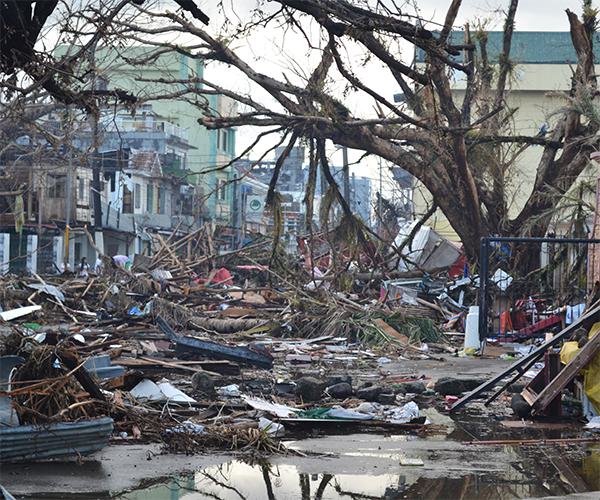A one-size-fit-all approach to natural disasters in APAC: is it viable?

Asia alone has among the highest rate of natural disasters in the world.
The tropical cyclone season in Asia has just come to a close, with countries in the Northwest Pacific, including coastal regions of China, Japan, parts of south-east Asia and the Pacific Islands affected by tropical storms until November. That combined with the monsoon season in Southeast Asia means regional security managers have had to contend with flooding, cyclones and storm surges on top of the ever-present risks of earthquakes, tsunamis, wildfires and volcanic eruptions.
The ‘ring of fire’, also known as the Circum-Pacific belt that delineates Asia as well as the east coast of the Americas, is home to 75 per cent of the world’s volcanoes, and is also where 90 per cent of the world’s earthquakes occur.
"Five times more likely to be affected by a natural disaster"
A report by ReliefWeb suggests that the APAC region has accounted for around 57 per cent of all natural disasters worldwide from 1970 until 2017. A person living in Asia is approximately five times more likely to be affected by a natural disaster than someone living in a different continent, hence highlighting the frequency of natural disasters in the region. This risk is further complicated when the impacts of a natural disaster are felt in underdeveloped countries, with poor enforcement of building standards and limited disaster management and emergency response capabilities.
These risks are however heterogeneous, and from a risk mapping perspective, the flashpoints for various forms of natural disasters vary greatly across the region. Flooding affects South Asia disproportionately, with flooding in low lying areas of India, Nepal, and Bangladesh having affected almost 27 million people in 2017. In contrast, some countries, such as Japan, as well as Pacific islands such as the Solomon Islands, feel the unique impacts of being located along the Pacific Ring of Fire. Japan, for instance, accounts for 20 per cent of all earthquakes with a magnitude of 6.0 or more, highlighting the frequency of severe earthquakes in-country. In Australia, the Northern Territory and northern areas of Western Australia and Queensland face the unique risk of extensive bushfires; during the 2019 to 2020 bushfire season over AUD 103 billion of damage was caused, with more than 9,350 buildings destroyed and around 450 fatalities.
The different socio-economic statuses of countries in Asia will also impact how each country experiences natural disasters. Across Japan, strong emphasis is placed on building earthquake-resistant infrastructure, which may explain why an earthquake of magnitude 6.8 and depth of 8.6 miles (14 km) in June 2019, near Yamagata prefecture, caused blackouts but no significant casualties. In contrast, an earthquake of similar magnitude of 6.7 and greater depth of 34 miles (55km) in Manipur, India, in January 2016, killed eleven people and wounded 200 more, with poor infrastructure a clear contributing factor.
"A one-size-fits-all approach to managing natural disasters is unlikely to mitigate the impacts of these very well."
The frequency, geographical and socio-economical variance across Asia, as well as each organisation’s differing risk appetite, means that a one-size-fits-all approach to managing natural disasters is unlikely to mitigate the impacts of these very well.
The awareness of each country and sublocation’s particular characteristics is important to informed decision making at the strategic, operational and tactical levels. While some organisations will opt to avoid any exposure to such significant natural disasters by not basing their operations in the region, others will need to do so. Organisations that need to operate in Asia-Pacific can where possible base themselves in locations that are relatively sheltered from the impacts of these, such as Singapore, although for many other organisations their business will necessitate them to be on the ground across Indonesia, the Philippines, South Asia and many other of the region’s natural disaster hot spots. This is where it becomes important for security managers to ensure that they have a clear understanding of their organisation’s risk tolerance – so that they can design and implement security systems to enable operations to continue up until the point that the risks are no longer tolerable. A customised approach to managing natural disasters is hence necessary and vital in Asia.




